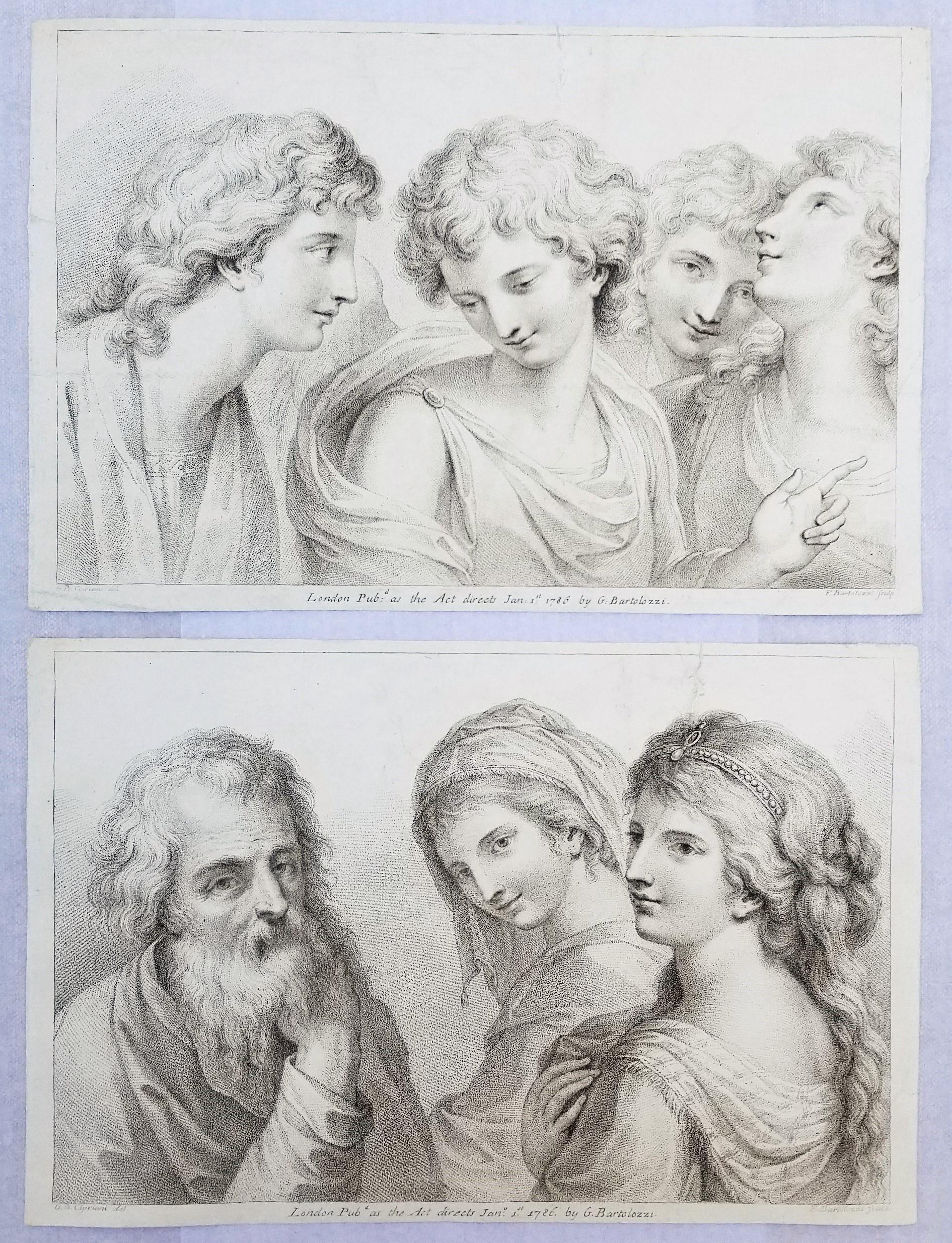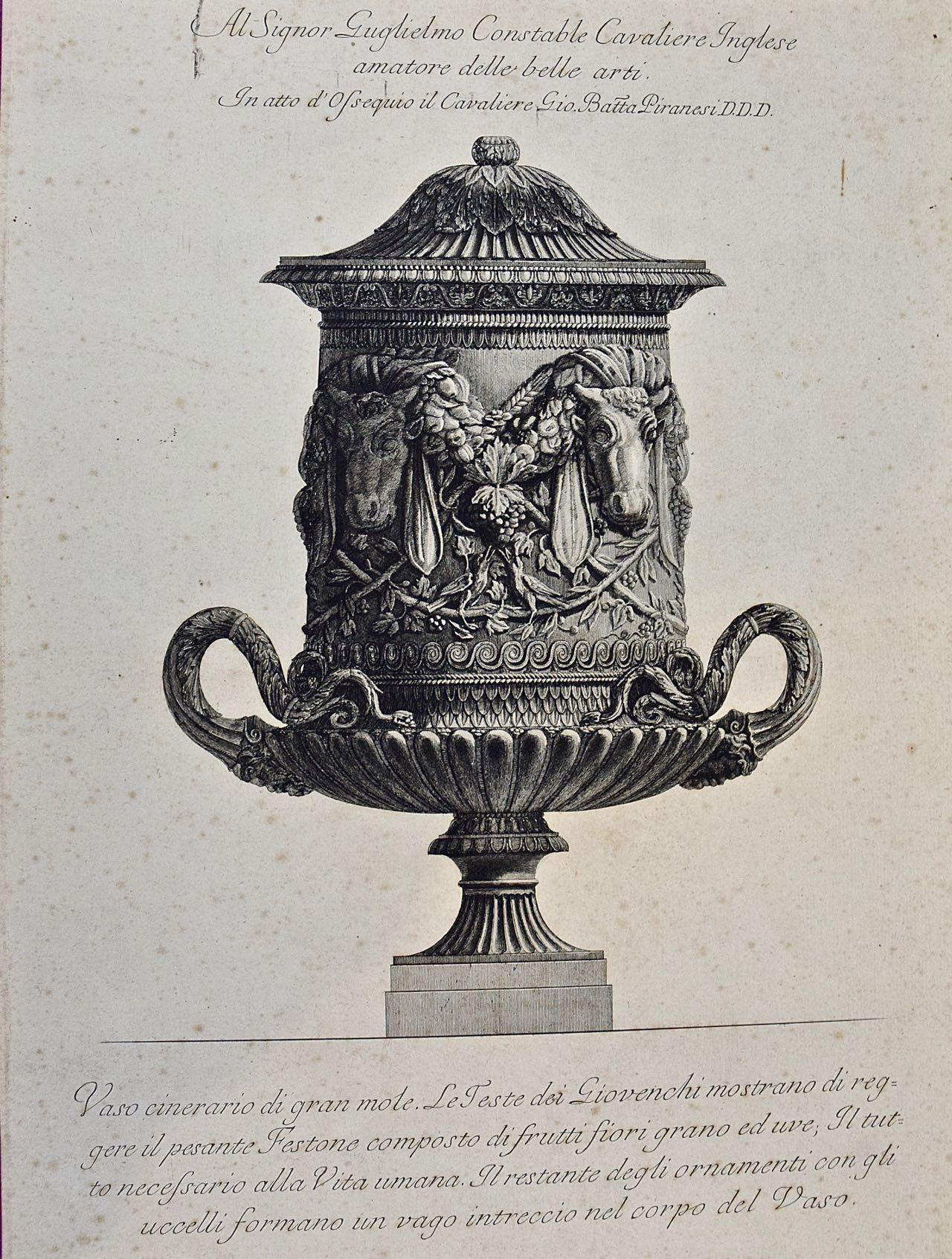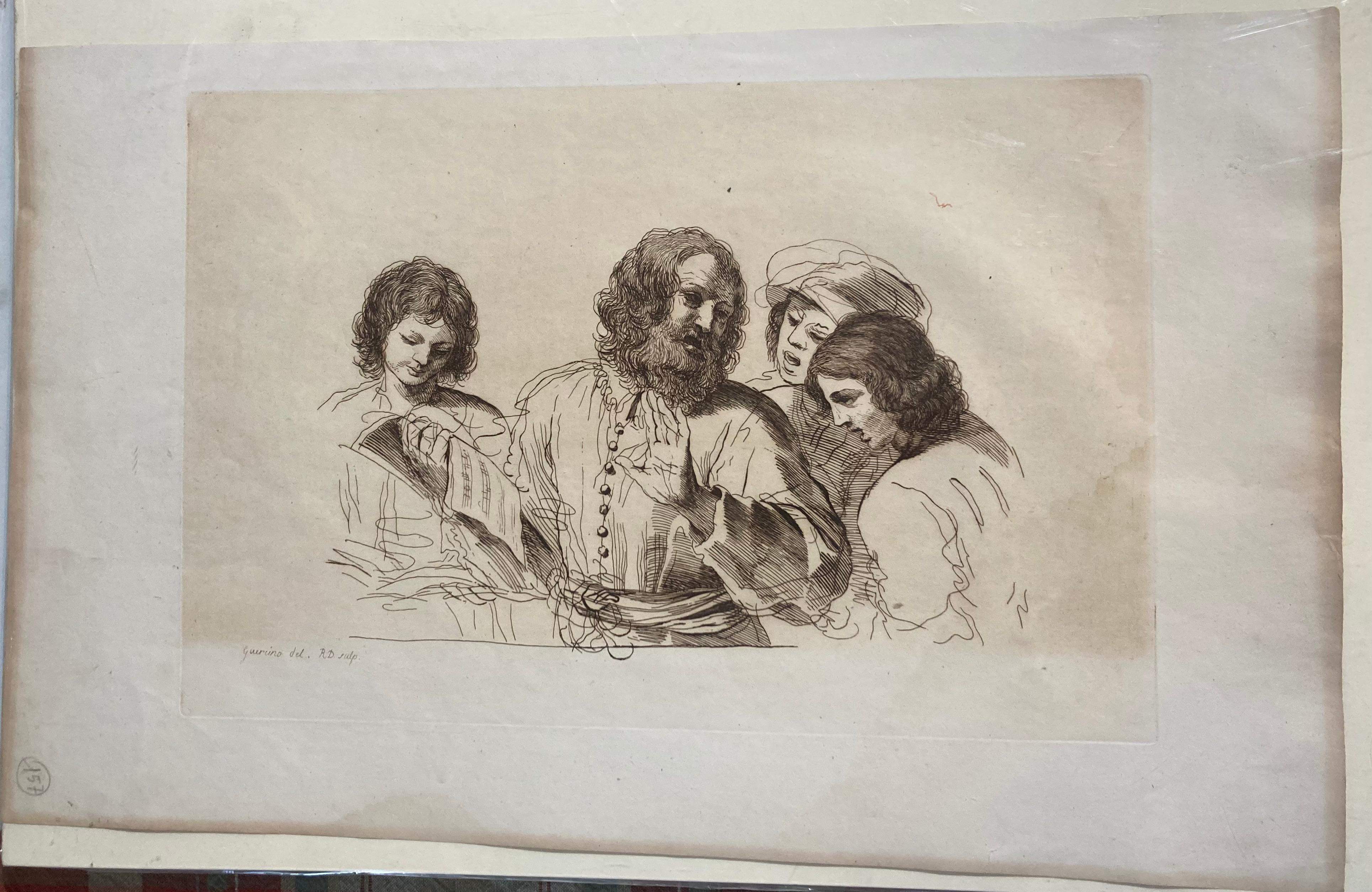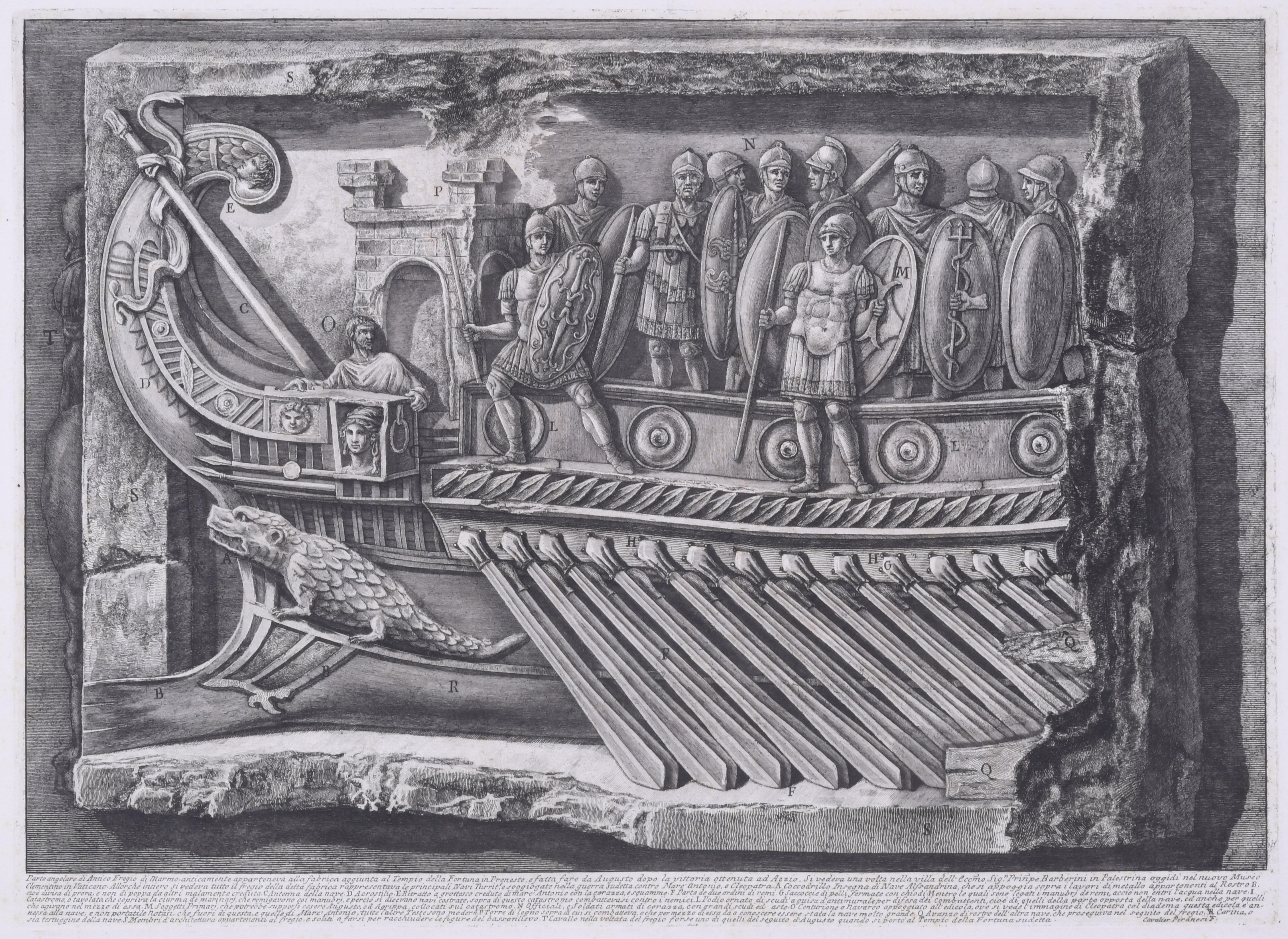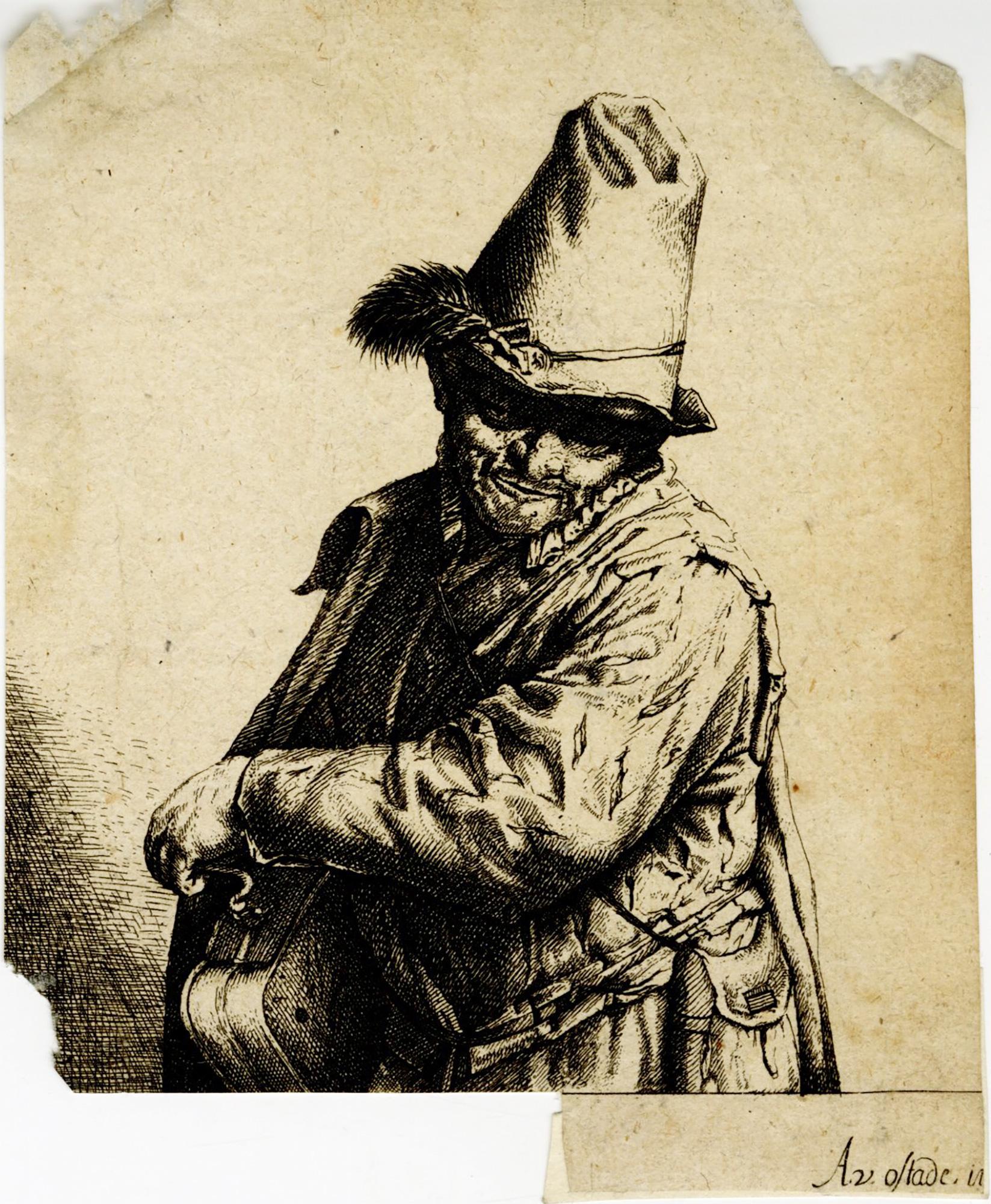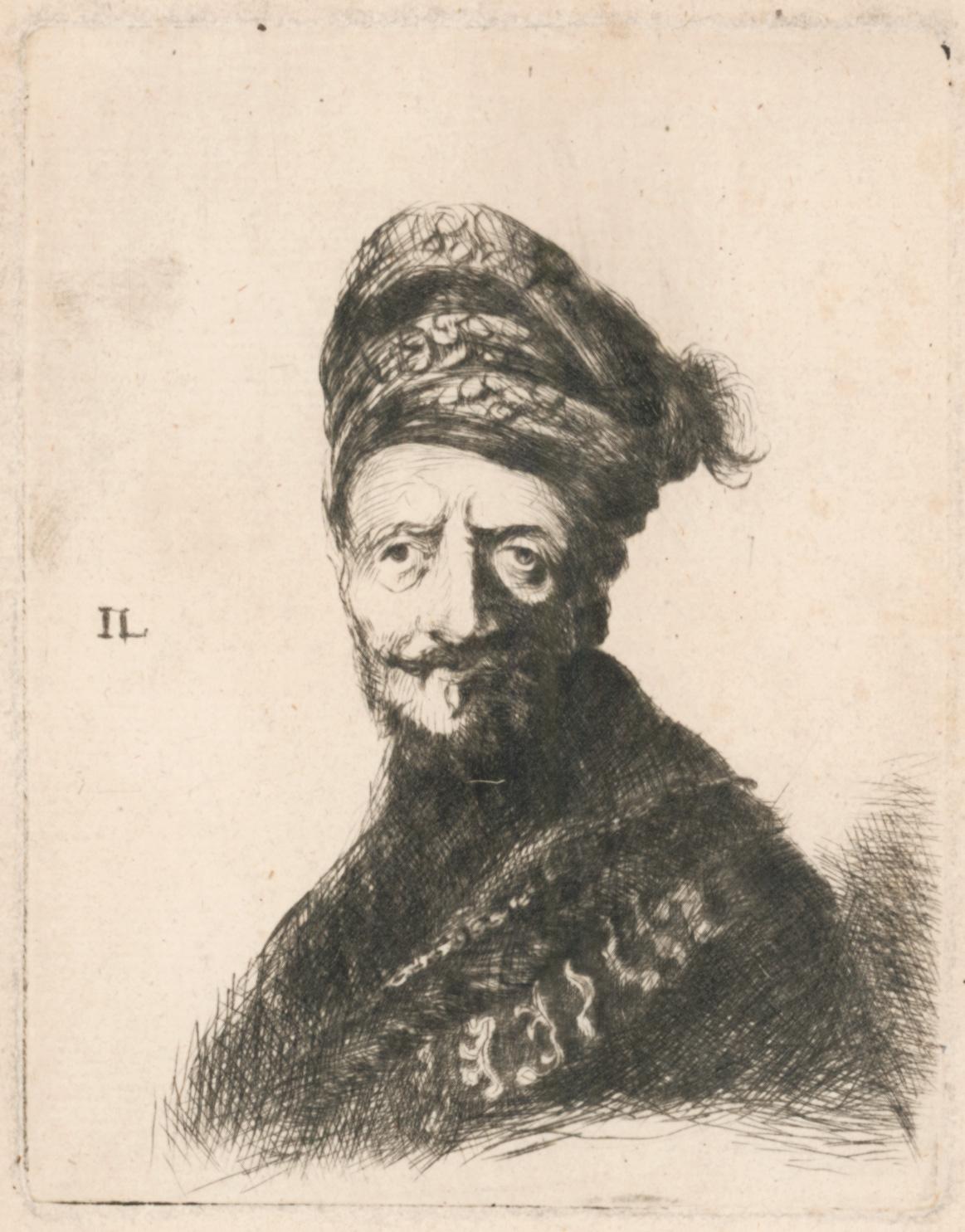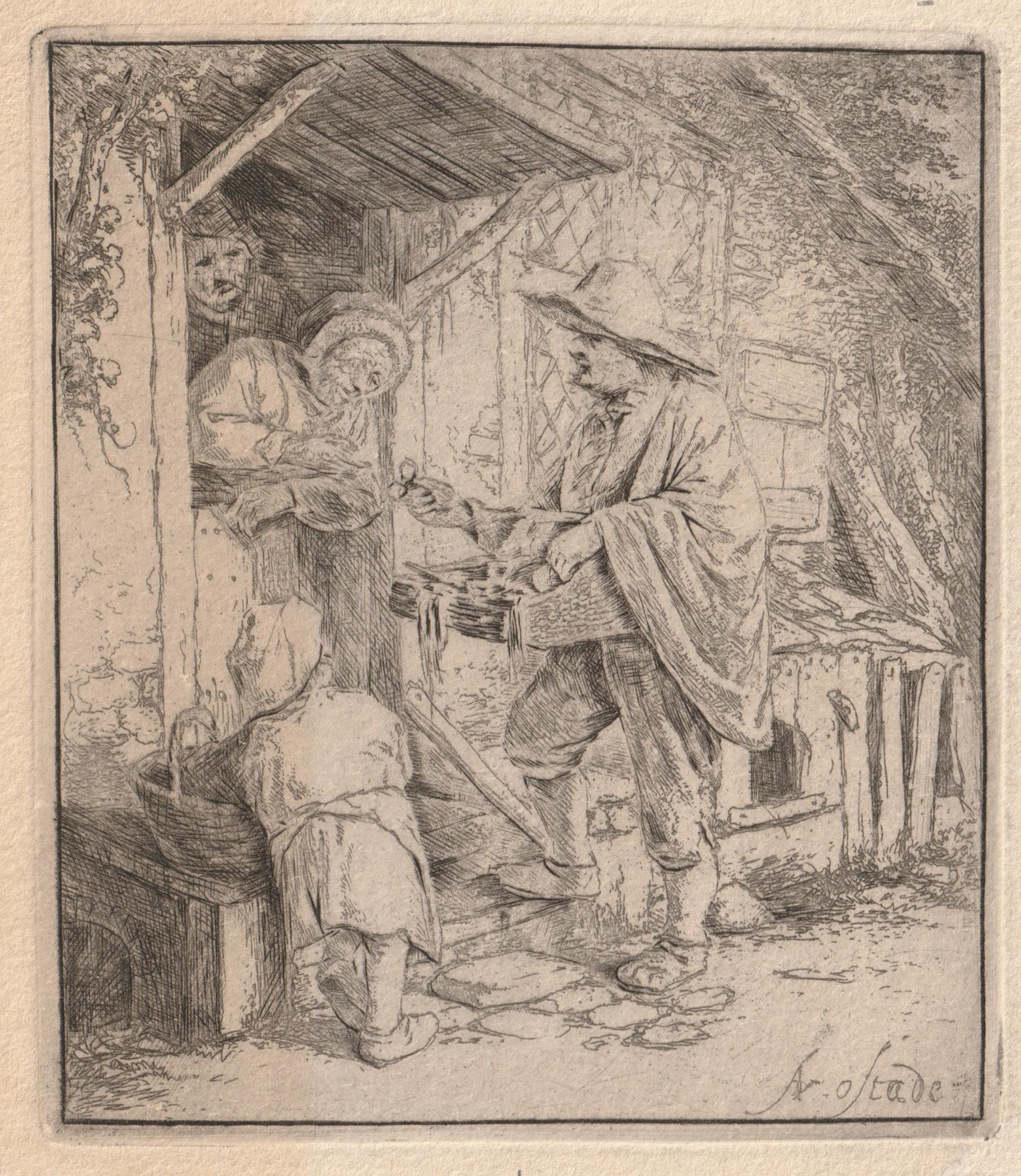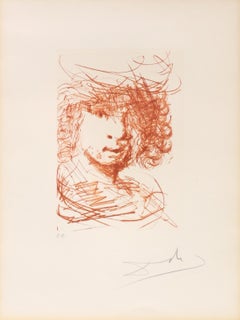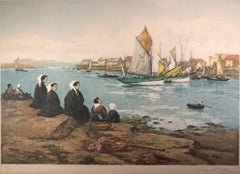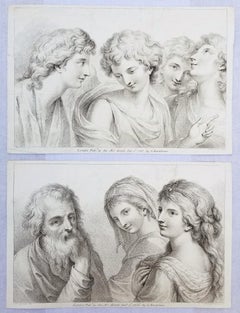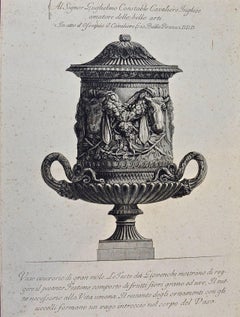
Bust of a Man Wearing a High Cap, Three Quarters Right (The Artist's Father?)
View Similar Items
Want more images or videos?
Request additional images or videos from the seller
1 of 7
Rembrandt van RijnBust of a Man Wearing a High Cap, Three Quarters Right (The Artist's Father?)1630, printed later
1630, printed later
About the Item
- Creator:Rembrandt van Rijn (1606 - 1669, Dutch)
- Creation Year:1630, printed later
- Dimensions:Height: 17 in (43.18 cm)Width: 16 in (40.64 cm)Depth: 2 in (5.08 cm)
- Medium:
- Movement & Style:
- Period:1630-1639
- Condition:Trimmed at margins.
- Gallery Location:Missouri, MO
- Reference Number:1stDibs: LU74733353973
Rembrandt van Rijn
Rembrandt was the most influential 17th Century Dutch painter. After years of early success as a portrait painter, his life was beset by financial hardship and personal tragedy. He continued to paint portraits and develop etchings. Rembrandt's portraits of his contemporaries, self-portraits and illustrations of scenes from the Bible are regarded as his greatest creative triumphs. His self-portraits form a unique and intimate autobiography, in which the artist surveyed himself without vanity and with the utmost sincerity. Like many artists of the Dutch Golden Age, such as Jan Vermeer of Delft, Rembrandt was also an avid art collector and dealer. Rembrandt never went abroad, but he was considerably influenced by the work of the Italian masters and Netherlandish artists who had studied in Italy, like Pieter Lastman, the Utrecht Caravaggists, Flemish Baroque, and Peter Paul Rubens. Rembrandt's foremost contribution in the history of printmaking was his transformation of the etching process from a relatively new reproductive technique into a true art form, along with Jacques Callot. His reputation as the greatest etcher in the history of the medium was established in his lifetime and never questioned since. Few of his paintings left the Dutch Republic while he lived, but his prints were circulated throughout Europe, and his wider reputation was initially based on them alone.
About the Seller
5.0
Vetted Seller
These experienced sellers undergo a comprehensive evaluation by our team of in-house experts.
Established in 1970
1stDibs seller since 2017
141 sales on 1stDibs
Typical response time: 22 hours
More From This SellerView All
- RembrandtBy Salvador DalíLocated in Missouri, MORembrandt Salvador Dali (Spanish, 1904-1989) Signed Lower Right "E.A." (Artist Edition) Lower Left 12 x 10 inches 23.25 x 19.25 inches with frame Salvador Dali was born in May 11, 1...Category
20th Century Modern Portrait Prints
MaterialsEtching
Price Upon Request - The Circus Dressing RoomBy Dame Laura KnightLocated in Missouri, MODame Laura Knight "The Circus Dressing Room" 1925 Etching Ed. 20 Signed Lower Right Image Size: approx. 14 x 10 inches Framed Size: approx. 23.5 x 17.75 inches An English impressio...Category
1920s Realist Figurative Prints
MaterialsAquatint
- In BrittanyBy Manuel RobbeLocated in Missouri, MOColor Engraving Image Size: approx 14 x 19.5 Framed Size: approx 21 x 26 3/4 Signed in Pencil Emmanuel Robbe called "Manuel Robbe", born in Paris on 16 December 1872 And died in Ne...Category
Early 1900s Impressionist Figurative Prints
MaterialsAquatint, Engraving
- "Mlle Landsberg" (grade planche, pl. 16)By Henri MatisseLocated in Missouri, MO"Mlle Landsberg" (grade planche, pl. 16), 1914 Henri Matisse (French, 1869-1954) Signed and Numbered Lower Right Edition 12/15 Image size: 7 7/8 x 4 5/16 inches Sheet size: 17 11/16 x 12 1/2 inches With frame: 19 1/2 x 14 1/2 inches Henri Matisse came from a family who were of Flemish origin and lived near the Belgian border. At eight o'clock on the evening of December 31, 1869, he was born in his grandparents' home in the town of Le Cateau in the cheerless far north of France. His father was a self-made seed merchant who was a mixture of determination and tightly coiled tension. Henri had no clear idea of what he wanted to do with his life. He was a twenty-year-old law clerk convalescing from appendicitis when he first began to paint, using a box of colors given to him by his mother. Little more than a year later, in 1890, he had abandoned law and was studying art in Paris. The classes consisted of drawing from plaster casts and nude models and of copying paintings in the Louvre. He soon rebelled against the school's conservative atmosphere; he replaced the dark tones of his earliest works with brighter colors that reflected his awareness of Impressionism. Matisse was also a violinist; he took an odd pride in the notion that if his painting eye failed, he could support his family by fiddling on the streets of Paris. Henri found a girlfriend while studying art, and he fathered a daughter, Marguerite, by her in 1894. In 1898 he married another woman, Amelie Parayre. She adopted the beloved Marguerite; they eventually had two sons, Jean, a sculptor and Pierre who became an eminent art dealer. Relations between Matisse and his wife were often strained. He often dallied with other women, and they finally separated in 1939 over a model who had been hired as a companion for Mme. Matisse. She was Madame Lydia, and after Mme. Matisse left, she remained with Matisse until he died. Matisse spent the summer of 1905 working with Andre Derain in the small Mediterranean seaport of Collioure. They began using bright and dissonant colors. When they and their colleagues exhibited together, they caused a sensation. The critics and the public considered their paintings to be so crude and so roughly crafted that the group became known as Les Fauves (the wild beasts). By 1907, Matisse moved on from the concerns of Fauvism and turned his attention to studies of the human figure. He had begun to sculpt a few years earlier. In 1910, when he saw an exhibition of Islamic art, he was fascinated with the multiple patterned areas and adapted the decorative universe of the miniatures to his interiors. As a continuation of his interest in the "exotic", Matisse made extended trips to Morocco in 1912 and 1913. At the end of 1917, Matisse moved to Nice; he would spend part of each year there for the remainder of his life. A meticulous dandy, he wore a light tweed jacket amd a tie when he painted. He never used a palette, but instead squeezed his colors on to plain white kitchen dishes...Category
1910s Fauvist Figurative Prints
MaterialsEtching, Drypoint
Price Upon Request - Canyon Road, Sante FeBy Will (William Howard) ShusterLocated in Missouri, MOCanyon Road, Santa Fe By. William Howard Shuster (American, 1893-1969) Signed Lower Right Edition of 100 Lower Center Titled Lower Left Unframed: 4" x 4.75" Framed: 15.75" x 15.25" ...Category
20th Century American Modern Landscape Prints
MaterialsEtching
Price Upon Request - Don JuanBy Louis IcartLocated in Missouri, MOAquating Engraving Image Size: approx. 20 1/4 x 13 3/8 Framed Size: 28 x 20.5 inches Pencil Signed Lower Right Louis Justin Laurent Icart was born in Toulouse in 1890 and died in Paris in 1950. He lived in New York City in the 1920s, where he became known for his Art-Deco color etchings of glamourous women. He was first son of Jean and Elisabeth Icart and was officially named Louis Justin Laurent Icart. The use of his initials L.I. would be sufficient in this household. Therefore, from the moment of his birth he was dubbed 'Helli'. The Icart family lived modestly in a small brick home on rue Traversière-de-la-balance, in the culturally rich Southern French city of Toulouse, which was the home of many prominent writers and artists, the most famous being Henri de Toulouse-Lautrec. Icart entered the l'Ecole Superieure de Commerce de Toulouse in order to continue his studies for a career in business, particularly banking (his father's profession). However, he soon discovered the play writings of Victor Hugo (1802-1885), which were to change the course of his life. Icart borrowed whatever books he could find by Hugo at the Toulouse library, devouring the tales, rich in both romantic imagery and the dilemmas of the human condition. It was through Icart's love of the theater that he developed a taste for all the arts, though the urge to paint was not as yet as strong for him as the urge to act. It was not until his move to Paris in 1907 that Icart would concentrate on painting, drawing and the production of countless beautiful etchings, which have served (more than the other mediums) to indelibly preserve his name in twentieth century art history. Art Deco, a term coined at the 1925 Paris Exposition des Arts Decoratifs, had taken its grip on the Paris of the 1920s. By the late 1920s Icart, working for both publications and major fashion and design studios, had become very successful, both artistically and financially. His etchings reached their height of brilliance in this era of Art Deco, and Icart had become the symbol of the epoch. Yet, although Icart has created for us a picture of Paris and New York life in the 1920s and 1930s, he worked in his own style, derived principally from the study of eighteenth-century French masters such as Jean Antoine Watteau, François Boucher and Jean Honoré Fragonard. In Icart's drawings, one sees the Impressionists Degas...Category
1920s Art Deco Figurative Prints
MaterialsEngraving, Aquatint
You May Also Like
- Set of Two Engravings after Cipriani "Four Muses" & "Father and Two Daughters"By Francesco BartolozziLocated in Saint Augustine, FLArtist: Francesco Bartolozzi (Italian, 1727-1815) Title: "Four Muses" & "Father and Two Daughters" Portfolio: Rudiments of Drawing *Issued unsigned, though both are signed by Bartolo...Category
1780s Old Masters Figurative Prints
MaterialsEngraving, Etching
- Ancient Roman Medici Marble Vase: An 18th Century Etching by PiranesiBy Giovanni Battista PiranesiLocated in Alamo, CAThis large 18th century etching by Giovanni Battista Piranesi is entitled "Vaso antico di Marmo adornato di eccellenti Sculture si nella parte anteriere che nell' opposta, le quail r...Category
1770s Old Masters Figurative Prints
MaterialsEtching
- Ancient Roman Marble Vase: 18th C. Piranesi Etching Vaso Cinerario di Gran MoleBy Giovanni Battista PiranesiLocated in Alamo, CA"Vaso Cinerario di Gran Mole. Le Teste dei Giovenchi mostrano di reggere it pesante Festone composto di Frutti Fiori Grans ed use. Il tuto Necefsario all Vita Umana. Il Restante degl...Category
1760s Old Masters Figurative Prints
MaterialsEtching
- "Il Maestro" Print after Franceso Barbieri called Guercino (1591-1666)By Giovanni Francesco Barbieri (Il Guercino)Located in Hallowell, MEOld Masters Print of Music Teachers after Franceso Barbieri called Guercino (1591-1666). This 13 x 21 inch etching is titled The Music Teachers after Franceso Barbieri called Guercino (1591-1666) Measurements: 13"x21". Susquehanna Antique Company...Category
18th Century Old Masters Figurative Prints
MaterialsEtching, Paper, Ink
- BacchanalBy Giovanni Andrea PodestàLocated in Fairlawn, OHInscribed in the square left: "Magnificentis/simo Principi/Paolo lorda/no. II Bracci/ani Duci/Aud. P.DDD/1640 Inscribed on right: Rome apud Franciscsum Saluucium Plate: 10 3/8 x 15...Category
18th Century and Earlier Old Masters Figurative Prints
MaterialsEtching
- Marble relief of a trireme from the Temple of Fortuna, Praeneste, from VasiBy Giovanni Battista PiranesiLocated in Fairlawn, OHMarble relief of a trireme from the Temple of Fortuna, Praeneste, from Vasi, candelabri, cippi, sarcofagi, tripodi, lucerne, ed ornamenti antichi disegnati ed incisi dal Cav. Gio. Ba...Category
1770s Old Masters Figurative Prints
MaterialsEtching
Recently Viewed
View AllMore Ways To Browse
Sol Y Sombra
Tim Trantenroth
Tobiasse Rams Horn
Victor Brauner On Sale
Vintage Boulangerie Signs
Vintage Camra
Vintage Camras
Vintage Engagement Rings Phoenix
Vintage Oil Lamp With Lady
Virginia Fisher On Sale
Washerwoman Renoir
William Blake On Sale
Yashiva In Jerusalem
CHIKANOBU, Yoshu On Sale
Alex Katz Ada In Spain
Arnold Belkin On Sale
Art Deco Posters Liquer
Brexit Nightmare
